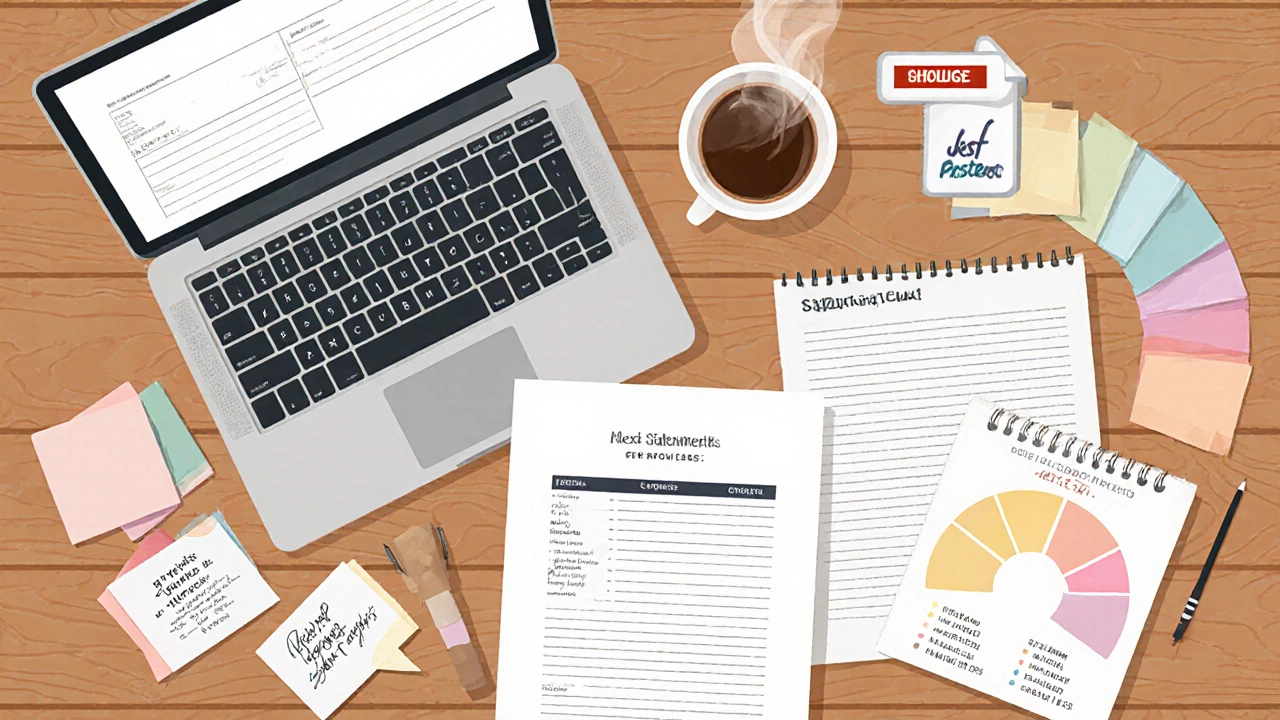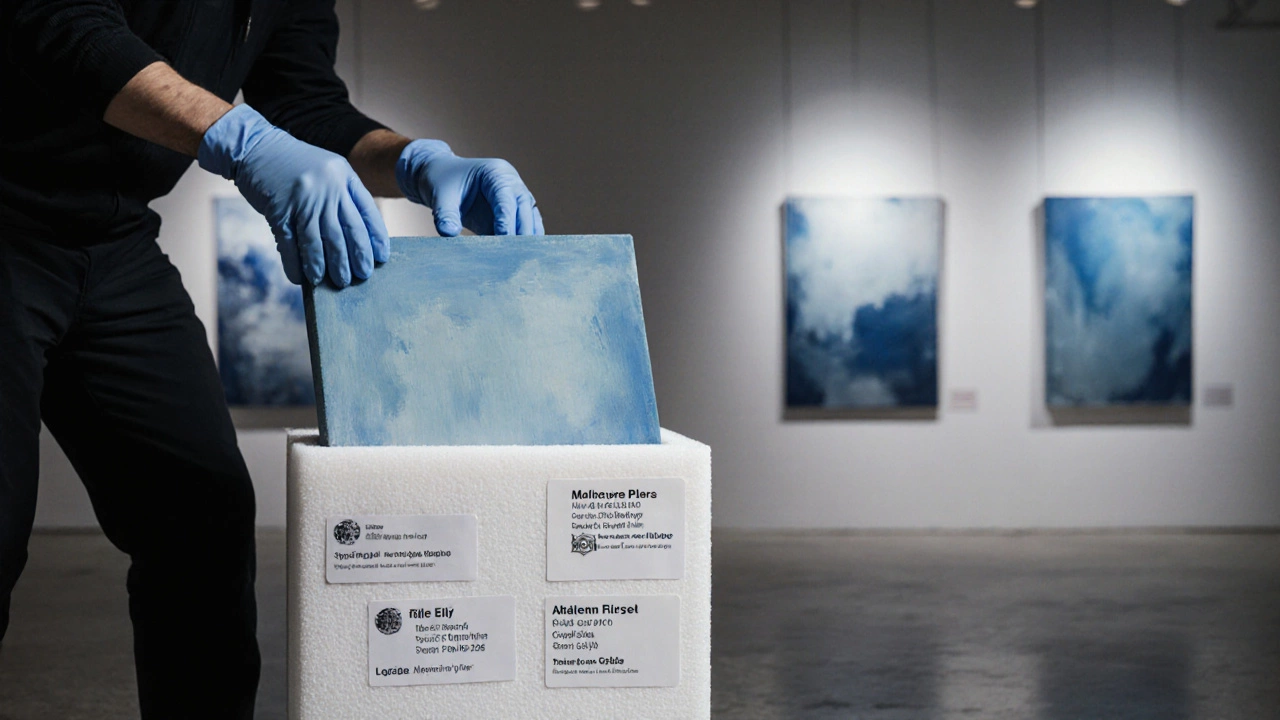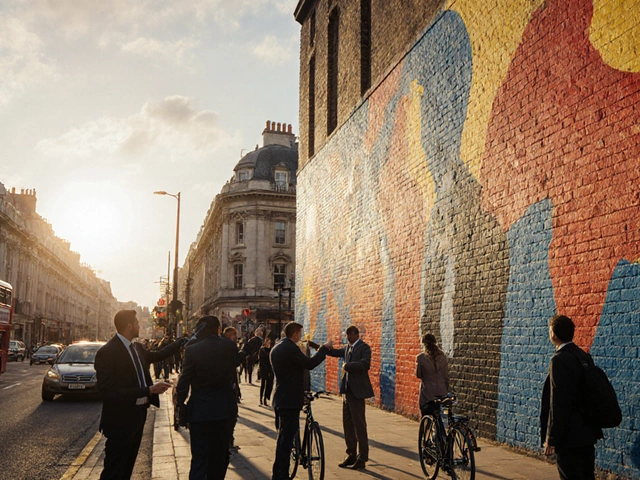Exhibition Type Selector
Find the right exhibition type for your artwork based on your career stage, budget, and timeline.
Your Recommended Exhibition Types
Pro Tips for Your Selected Exhibition
Based on your selections, here's what you should focus on to maximize your chances of acceptance:
Dreaming of seeing your painting or sculpture on the walls of a gallery can feel both exciting and intimidating. Most artists ask the same question: art exhibition submission is a maze of deadlines, paperwork, and networking, and it’s easy to wonder where to start. This guide walks you through every stage, from figuring out which shows match your work to polishing your portfolio and finally getting that acceptance email.
Key Takeaways
- Identify the exhibition type that fits your medium, career stage, and budget.
- Build a professional portfolio and a concise artist statement that speak the same language as curators.
- Research each venue’s submission guidelines and follow them exactly.
- Use networking, social media, and local art groups to increase visibility.
- Prepare logistics-shipping, insurance, installation-well before the show opens.
Understand the Types of Exhibitions
Not every show is created equal. Knowing the difference helps you target the right opportunities and avoid wasting time on calls that don’t match your work.
| Type | Selection Process | Typical Cost | Best For | Typical Deadline |
|---|---|---|---|---|
| Juried Show | Panel of jurors reviews submissions | Application fee $25‑$75 | Emerging artists seeking credibility | 3‑6 months before opening |
| Open Call | Curator selects from all entries | No fee or low fee ($10‑$30) | Artists of any experience level | 1‑3 months before opening |
| Group Show | Invitation or open call, limited slots | Often shared cost or free | Artists with a cohesive theme | Varies, usually 2‑4 months prior |
| Solo Exhibition | Gallery commissions based on sales potential | Higher production cost, sometimes covered by gallery | Established artists with a body of work | 6‑12 months before opening |
Prepare Your Portfolio and Artist Statement
Curators skim dozens of submissions daily, so a clean, well‑organized portfolio is your first pitch. Here’s how to make it count:
- Portfolio is a curated collection of high‑resolution images, descriptions, and dimensions of your best work. Keep it under 20 pieces; focus on quality, not quantity.
- Include only recent work (last 3‑5 years) unless older pieces show a distinct evolution.
- For each image, add a caption with title, year, medium, size, and a brief conceptual note.
- Format the PDF for easy viewing: 8.5" × 11", 300 dpi, compress images just enough to stay under any file‑size limit.
- Craft an Artist Statement that answers who you are, what you make, and why it matters in 150‑250 words. Use the same tone you’d use in a conversation with a curator.
Research Galleries and Curators
Targeted research beats blanket emailing every space you can find. Start with three layers of information:
- Gallery Profile: Look at past shows, represented artists, and the gallery’s mission statement. Does your work align with their aesthetic?
- Curator Background: Many galleries list the curator’s bio and past projects. Knowing their interests helps you tailor your pitch.
- Submission History: Some venues publish acceptance rates or previous open‑call winners. Use that data to gauge competition.
Keep a spreadsheet with columns for venue name, contact, submission deadline, preferred format, and any notes on fit.

Follow Submission Guidelines to the Letter
The easiest way to get rejected is by ignoring the fine print. Below is a checklist that works for most calls:
- Read the entire call‑for‑entries page, then read it again.
- Note the required file format (JPEG, PDF, TIFF) and color profile (sRGB vs. Adobe RGB).
- Check the maximum file size and dimensions; resize images accordingly.
- Ensure you’ve included every required document: portfolio, artist statement, CV, and sometimes a cover letter.
- Use the exact subject line and email address requested. If they ask for "Subject: Open Call - [Your Name]", follow that precisely.
- Attach a short, polite cover email that references a specific piece from the call’s theme.
- Send a test email to yourself first to confirm that attachments open correctly.
- After sending, mark the deadline date in your calendar and set a reminder to follow up after the stated review period.
Build Relationships and Network
Exhibitions aren’t just about the work; they’re about people. Sustainable networking looks like this:
- Attend openings at galleries you admire. Introduce yourself to the curator, mention a specific artwork you liked, and hand over a business card. \n
- Join local artist collectives or meetup groups. Many cities have free monthly talks where curators scout talent.
- Volunteer for gallery events. You get backstage access and a chance to observe how shows are organized.
- Ask for feedback on your portfolio after a rejection. Constructive criticism builds rapport and improves future submissions.
Leverage Online Platforms and Social Media
While traditional calls remain vital, a strong digital presence can surprise a curator who discovers you online.
- Maintain an updated artist profile on Artslant or similar artist directories. Include exhibition history and press mentions.
- Post high‑quality images on Instagram with relevant hashtags (#artshow, #gallerysubmission, #artistoninstagram). Tag the gallery when you apply.
- Use LinkedIn to connect with art professionals. A short, polite message referencing a recent exhibition they organized goes a long way.
- Consider a simple website (Squarespace, Wix) with a dedicated "Exhibitions" page that lists past shows, press quotes, and a downloadable portfolio.

Handle Logistics and Presentation
Once you receive an acceptance, the real work begins. Here’s a quick prep list:
- Artwork Delivery: Choose a reputable art‑shipping company, insure for the full replacement value, and include clear handling instructions.
- Installation: Verify if the gallery provides hanging hardware. If not, bring your own mounts and schedule a trial install.
- Labeling: Prepare professional labels with title, year, medium, dimensions, and price (if applicable). Use a consistent font and size.
- Artist Talk / Opening: Prepare a 5‑minute talking point about the series you’re showing. Practice to stay within the allotted time.
Common Pitfalls and How to Avoid Them
Even seasoned artists slip up. Spot these red flags early:
- Submitting the wrong image resolution. Double‑check each file before hitting send.
- Using a generic cover letter. Mention a specific theme from the call to show you read it.
- Missing deadlines by a few hours. Set calendar alerts 48 hours before the due date.
- Overloading the portfolio. Curators prefer a tight, cohesive selection.
- Neglecting follow‑up. A short thank‑you after an opening keeps the relationship warm.
Next Steps
Pick one exhibition type that feels right, gather your portfolio, and start researching calls that close within the next 30 days. Treat each submission as a mini‑project: set milestones, track progress, and celebrate every acceptance-big or small. The more you practice, the easier the process becomes.
Frequently Asked Questions
What is the difference between a juried show and an open call?
A juried show uses a panel of experts to review submissions, often charging an application fee and offering a higher prestige boost. An open call usually has a single curator making selections, may be free or low‑cost, and tends to be more inclusive.
How many pieces should I include in my portfolio?
Aim for 12‑20 high‑quality works that represent the range of your practice. Too many images can overwhelm reviewers; too few may not show depth.
Do I need a formal CV for every submission?
Most calls request a brief art CV. Include education, exhibitions, awards, and publications-keep it to one page unless you have extensive experience.
Can I submit the same work to multiple shows?
Yes, but read each call’s exclusivity clause. Some juried shows require that the piece be unpublished elsewhere for a set period.
What should I do if I get rejected?
Ask politely for feedback, update your portfolio based on any insights, and keep applying. Rejection is part of the process and often leads to stronger future submissions.







